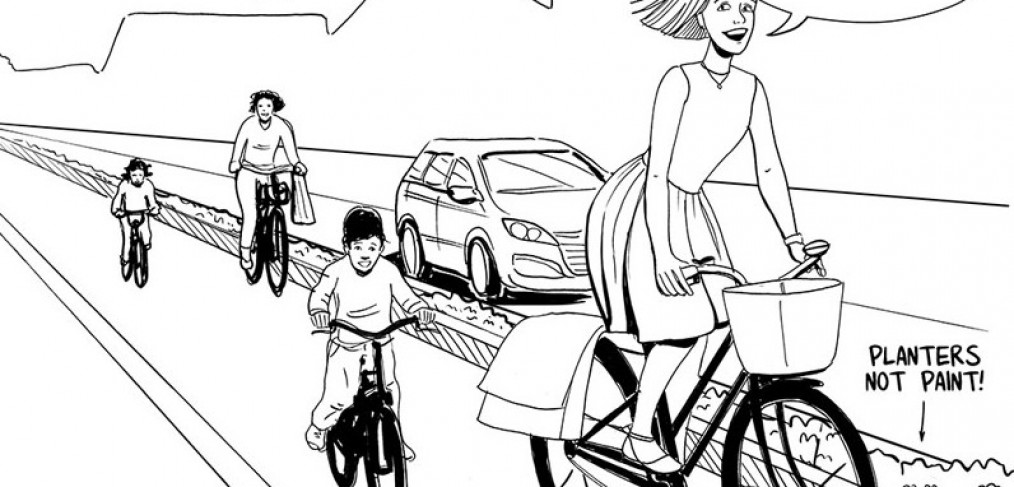
Redesign
When I bicycle around Boston it’s mostly vehicularly. While the rules of the road generally give some order to the roads- I always need be extra vigilant and assume drivers don’t see me.
I’m experienced, follow the rules of the road, and best practices for bicycling. I can do everything in my power- but there’s no barrier if a driver is inattentive.
It is obvious that there is a better way. 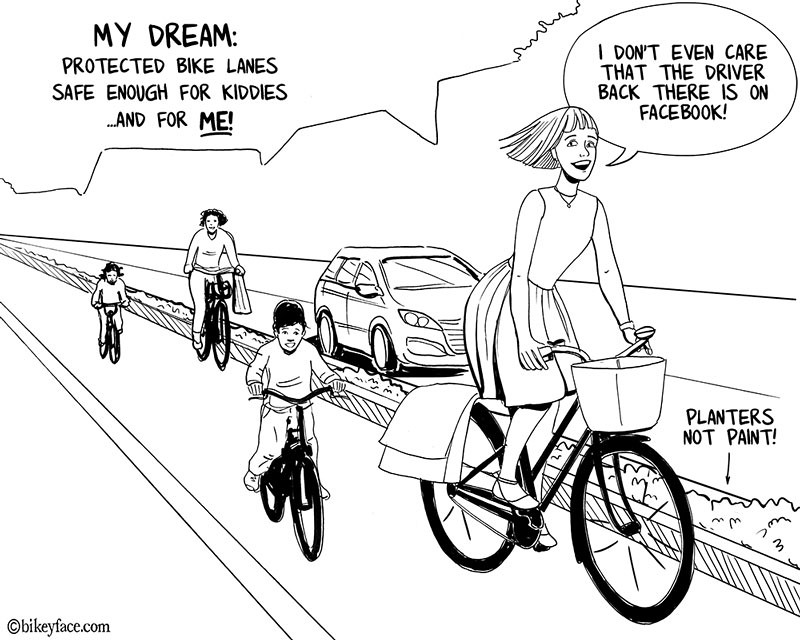 But why so much resistance to making the dream a reality?
But why so much resistance to making the dream a reality?
No amount of education can fix an unequal match of people riding bikes next to cars. And only re-designing the roads will invite more people to ride a bicycle.

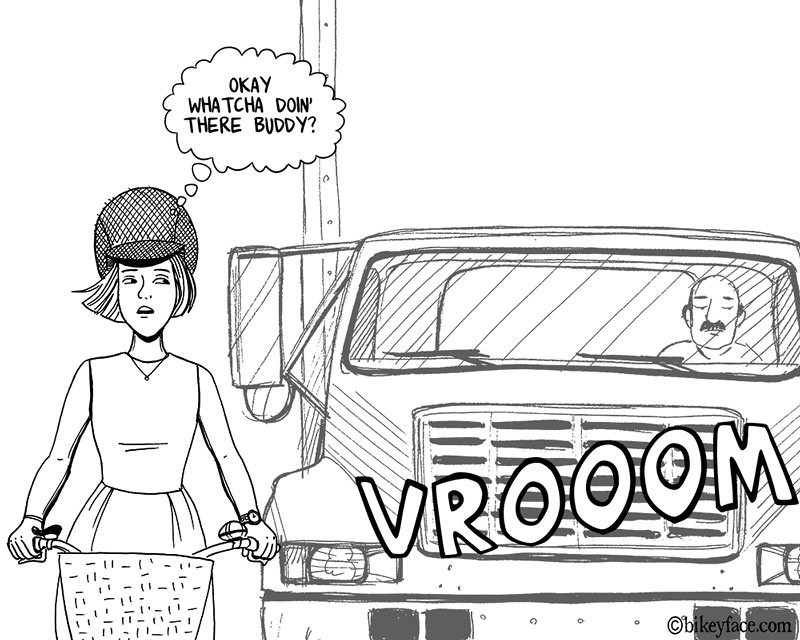

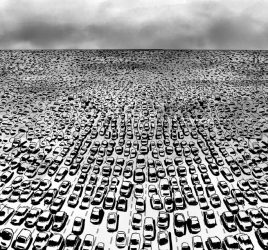
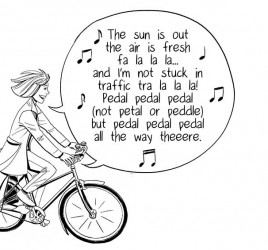
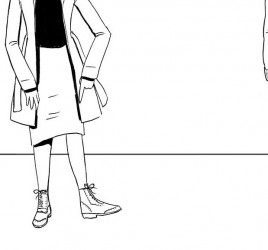
The important place for design and behavior is intersections. Physically separated designs are TERRIBLE for design and behavior through intersections. There is nothing obvious in your thought this is a better facility. Actually they teach ALL users the exact opposite of what the culture needs to know about best practice bicycling.
Only 20% of bicyclist injuries severe enough for hospital visits are from bicyclist-car collisions and 50% are from solo falls, low lying close adjacent wheel diverting obstacles like low lying planters isn’t a good idea.
Roadway rules were designed with the safety of vehicle flows in mind.
There already is too much investment and over-engineering in roadway portion of our travel corridors. Creating inferior operational designs as a marketing ploy to encourage more bicycling is a TERRIBLE was to invest in public transportation infrastructure. Other than better construction and maintenance of roadway surfaces, any new major investment in our transportation corridors I want to go to pedestrians and mass transit – even though I ride my bike every day.
There are designs for protected intersections that DO work for left turns and keep those on bikes safe from cars. Bikeyface isn’t a street design engineer, she’s an artist and she’s doing a a great job spreading the word.
Although I do agree there is far too much acceptance of poor design in the U.S. It drives me nuts when people praise some new bike lane because they’re so desperate for SOMETHING, even though the design is terrible and potentially dangerous.
I read a lot of bad about sidewalk cyclists, and I understand why. But consider this. Maybe I want to make a journey along a particular route by bike, but I’m apprehensive about danger from traffic. What should I do?
“Man up” and get on with it?
Change my plan – not make the journey, alternative mode (drive?), go another way, etc?
Ride on the pavement for the busy bits?
Only the last option indicates to an observer that there is a problem of any kind. Otherwise it’s “but you’re already biking”, or no idea that maybe I would like to go that way by bike. And if you want to encourage cycling (as every politician seems to say) then fining everyone for sidewalk cycling is a backwards step. So yay for (courteous) sidewalk cycling.
Personally I think the only place sidewalk cycling is acceptable is where the roads are clearly unsafe. There’s the rub I guess, is there some absolute measure of unsafe or does everyone decide for themselves. For me unsafe is something such as Memorial Drive which as far as I know is open to cyclists but does not (to me) have safe space for cars and bikes to coexist. In general I find if a road has two or more lanes going in the same direction and no shoulder/breakdown lane then it is too dangerous for cycling.
Define “clearly unsafe” in some unambiguous and objective manner that everyone agrees with. Till then, you’re going to get differences of opinion and behavior.
As long as right turns (on red OR green) are legal, biking will always be chance to cheat death at every intersection.
Bike face NAILED the stereotypes. Lol at the VH guy and the politician st the photo op. Perfect!
How does this infrastructure you’re promoting reduce conflicts at intersections and driveways? How does it allow for safe lane changes, particularly when the cyclists needs to get into the left lane to make a left turn? How does this infrastructure allow for cycling a significant distance, say at least 100 miles? How does this infrastructure allow one to maintain a descent speed of at least 20+ mph? How can it make cyclists safer if they are more hidden from view of motorists and more likely to be right hooked?
Instead of simply down voting my questions, can you at least attempt to answer them?
Hi Jason,
The concerns about intersections and driveway conflicts are valid. Protected bike lanes work best in areas where there are few driveways, such as commercial corridors where most businesses are served by alleys. Salt Lake City, Austin, Davis, and even Boston have either installed or are installing protected intersections (http://www.protectedintersection.com/) to minimize conflicts. Providing a separate signal for bicyclists will make it safer, and Chicago found that bicyclists complied more frequently when given their own signal (http://articles.chicagotribune.com/2013-06-10/classified/ct-met-getting-around-0610-20130610_1_cyclists-signals-bike-traffic).
Protected bike lanes, like all types of infrastructure, are not a one-size-fits-all solution. A quiet residential street doesn’t need a protected bike lane to make it safe for most users. It’s not meant to accommodate bicyclists traveling long distances at fast speeds. Different types of bike infrastructure achieve different goals, just like a country highway serves a different purpose than a city road. Protected bike lanes are meant to make more people feel comfortable riding in an urban setting.
With a protected bike lane, you would usually make a two stage left turn rather than a vehicular left.
I don’t see any reason why such a facility would allow people to keep a speed of 20+ mph, provided that is a safer speed given the conditions. Typically, you’d want a protected lane to be wide enough for one bicyclist to pass another.
The key to visibility at intersection is making sure bicyclists are not shielded by parked cars. And making it clear to motorists that they MUST yield to bicyclists in the bike lane before turning right (as they must do today.)
My comment should say “I don’t see any reason why such a facility WOULDN’T allow people to keep a speed of 20+ mph.” Sorry about that.
I’d suggest you spend a little time reading David Hembrow’s blog, where these things are discussed at length. The Dutch and the Danes do much better with infrastructure that your analysis concludes should be inferior — that suggests that your analysis must be focused on some less-significant part of the safety picture. The main thing that I’ve concluded is that you cannot vary safety knobs independently — for example, perhaps vehicular cycling *would* be safer than infrastructure at Dutch levels of cycling, but since Dutch levels of cycling appear to require infrastructure, that choice is not available to us. And lest you think Dutch ride shares are unpossible here in the US, if I start my commute home any time in the next hour, I expect about a 20-25% share on Hampshire Street in the rush direction (I’ve counted cars vs bikes traversing a light and gotten 30%). Imagine if Hampshire connected to something nicer than Beacon. Imagine if the light at Somerville Ave didn’t take so long. Imagine if bikes could traverse Porter Square legally w/o either riding on Mass. Ave or cutting through the parking lot.
Again, see Hembrow’s blog. Your questions are answered there.